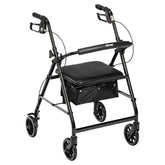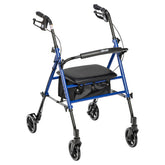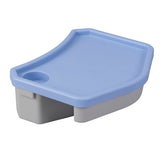BEST QUALITY FOR YOU
Where Quality Meets Comfort.
PRICE MATCH GURANTEE
Find a better price and we will beat it.
SERVICE YOU CAN TRUST
Local techs and free lifetime phone support












Sterile Peripheral IV Catheter with Straight Hub - ETFE, Radiopaque, Color-Coded, Latex-Free
- $0.88
$0.92- $0.88
- Unit price
- per
Description
xProfessional Sterile Peripheral IV Catheter with Straight Hub Design
This premium sterile peripheral intravenous catheter represents the pinnacle of short-term vascular access technology, combining advanced materials engineering, precision manufacturing, and clinician-focused design features to deliver reliable venipuncture success, optimal patient comfort, and secure catheter stability throughout therapy duration. Designed for healthcare professionals performing peripheral IV insertions for blood sampling, hemodynamic monitoring, and intravenous fluid or medication administration, this single-use catheter provides the clinical performance, safety features, and ease of use demanded in modern acute care, emergency medicine, surgical, and outpatient infusion settings.
Engineered for Short-Term Vascular Access (Less Than 30 Days)
This peripheral IV catheter is specifically designed and FDA-cleared for short-term vascular access applications lasting less than 30 days, making it the ideal choice for acute care hospitalizations, surgical procedures, emergency department treatments, outpatient infusion therapy, and temporary intravenous access needs. The short-term designation reflects the catheter's material composition, biocompatibility profile, and intended clinical applications, which are optimized for temporary rather than long-term indwelling use. This catheter excels in clinical scenarios requiring rapid vascular access for fluid resuscitation, medication administration, blood product transfusion, contrast media injection for diagnostic imaging, perioperative fluid management, and emergency stabilization. The short-term use profile ensures the catheter materials and design are perfectly matched to typical peripheral IV dwell times, providing optimal performance throughout the expected therapy duration without the complications that can occur when catheters remain in place beyond their intended use period.
Thin-Wall Needle Technology for Easy Venipuncture
The catheter features advanced thin-wall needle construction that fundamentally improves venipuncture success rates by reducing the insertion force required to penetrate vessel walls while maximizing the internal catheter diameter for optimal flow rates. This sophisticated thin-wall technology delivers multiple critical clinical advantages: the ultra-sharp needle point with precision-ground bevel geometry penetrates skin and vessel walls with minimal resistance, reducing patient discomfort and tissue trauma during insertion; the thin needle wall allows for a larger internal catheter lumen relative to the external needle gauge, providing superior flow rates compared to standard-wall catheters of the same gauge; the reduced insertion force required with thin-wall needles improves first-stick success rates, particularly valuable when accessing fragile veins in elderly patients, pediatric populations, or individuals with difficult venous access; and the easier penetration characteristics reduce the risk of needle deflection or vein rolling that can occur when excessive force is required for insertion. Healthcare professionals consistently report that thin-wall needle technology improves their confidence during venipuncture procedures, reduces the number of insertion attempts required, and enhances overall procedural efficiency.
Straight Hub Design for Enhanced Catheter Stability
The thoughtfully engineered straight hub configuration provides superior catheter stability after insertion, enabling clinicians to maintain precise catheter positioning that minimizes the risk of blood vessel trauma, tissue damage, and catheter migration throughout the therapy period. The straight hub design delivers several important clinical and practical benefits: it creates a low-profile connection that sits flush against the skin surface, reducing the leverage forces that can cause catheter movement or dislodgement when tubing is manipulated; it provides a stable platform for secure tape fixation, enabling reliable catheter securement that prevents the pistoning motion responsible for phlebitis and infiltration; it allows for natural, ergonomic hand positioning during insertion, giving clinicians better control and tactile feedback throughout the venipuncture procedure; and it facilitates easier connection of IV tubing, extension sets, and other accessories without creating stress on the catheter-vein interface. The straight hub orientation is particularly valuable for insertion sites on the hand, forearm, and antecubital fossa where anatomical contours and patient movement can challenge catheter stability with other hub designs.
Premium ETFE Catheter Material for Biocompatibility
The catheter is manufactured from ethylene tetrafluoroethylene (ETFE), a premium fluoropolymer material specifically selected for its exceptional biocompatibility, chemical resistance, and mechanical properties that are ideally suited for short-term intravascular applications. ETFE delivers numerous advantages over alternative catheter materials: it exhibits superior biocompatibility with minimal tissue reactivity, reducing the inflammatory response that contributes to phlebitis and catheter-related complications; it provides excellent chemical resistance to medications, blood products, and infusion solutions, maintaining catheter integrity even when exposed to aggressive pharmaceutical agents; it offers optimal stiffness-to-flexibility balance, providing enough rigidity for successful insertion while remaining flexible enough to conform to vessel anatomy and resist kinking; and it features a smooth, low-friction surface that facilitates catheter advancement during insertion and reduces the risk of thrombus formation on the catheter surface. The ETFE material maintains consistent performance characteristics throughout the catheter's dwell time, ensuring reliable function from insertion through removal.
Translucent Hub for Rapid Blood Flashback Visualization
The clear, translucent hub construction enables instant visual confirmation of successful venipuncture through rapid detection of blood flashback—the appearance of blood in the catheter hub that signals proper needle placement within the vein lumen. This critical visual feedback provides multiple clinical advantages: it gives clinicians immediate, unmistakable confirmation of successful vein entry, reducing uncertainty and improving procedural confidence; it allows early detection of venipuncture success, enabling clinicians to advance the catheter at the optimal moment when the needle tip is properly positioned within the vessel; it helps differentiate between arterial and venous access through observation of blood color and pulsatile flow characteristics; and it provides ongoing visual monitoring capability that can alert clinicians to catheter occlusion, infiltration, or other complications during therapy. The translucent hub material is engineered to provide crystal-clear visibility without compromising structural strength or connection integrity, ensuring reliable performance alongside superior visualization.
Color-Coded Hub System for Instant Gauge Identification
The catheter features a standardized color-coding system that enables instant visual identification of catheter gauge size, dramatically reducing the risk of size-selection errors and improving workflow efficiency in fast-paced clinical environments. The universal color-coding follows internationally recognized standards that healthcare professionals worldwide rely on for quick, accurate catheter selection:
- 20 Gauge - Pink Hub: Versatile mid-range size suitable for most adult patients requiring routine fluid administration, medication infusion, and blood transfusion
- 22 Gauge - Blue Hub: Smaller diameter ideal for pediatric patients, elderly individuals with fragile veins, and situations requiring longer dwell times with reduced phlebitis risk
- 24 Gauge - Yellow Hub: Finest gauge for neonatal patients, extremely fragile veins, and applications where minimal vessel trauma is paramount
This color-coding system eliminates the need to read small print on packaging during time-critical situations, reduces the cognitive load on busy clinicians managing multiple patients, and provides an additional safety check that helps prevent wrong-size catheter selection that could compromise patient care or procedural success.
Radiopaque Catheter for X-Ray Visualization
The catheter incorporates radiopaque materials that render it visible on X-ray, CT, and fluoroscopic imaging, enabling radiographic confirmation of catheter position when needed for clinical assessment or troubleshooting. This radiopaque feature provides important diagnostic capabilities: it allows verification of catheter tip location if there's clinical suspicion of catheter migration or malposition; it enables identification of retained catheter fragments in the rare event of catheter breakage or shearing; it facilitates assessment of catheter relationship to anatomical structures when evaluating complications; and it provides documentation of catheter presence and position for medicolegal purposes. While routine peripheral IV catheters rarely require radiographic confirmation, the radiopaque feature provides valuable diagnostic capability when clinical circumstances warrant imaging assessment.
Stainless Steel Needle for Reliable Penetration
The introducer needle is precision-manufactured from medical-grade stainless steel, a material selected for its exceptional sharpness retention, corrosion resistance, and mechanical strength that ensure consistent venipuncture performance. The stainless steel construction provides several critical advantages: it maintains ultra-sharp cutting edges that penetrate tissue cleanly with minimal trauma; it resists bending or deflection during insertion, even when encountering tough skin or challenging venous access; it provides the tactile feedback clinicians rely on to detect successful vein entry; and it ensures the needle remains structurally sound throughout the insertion procedure without risk of breakage or deformation. The medical-grade stainless steel is selected specifically for biocompatibility and corrosion resistance, ensuring patient safety throughout the brief period the needle remains in contact with tissue.
Plastic Hub Construction for Lightweight Handling
The catheter hub is manufactured from medical-grade plastic materials that provide the optimal combination of structural strength, lightweight handling, and cost-effectiveness. The plastic hub construction delivers practical advantages including reduced overall catheter weight that minimizes pull on the insertion site, excellent dimensional stability that ensures reliable luer connections, and transparent or translucent properties that enable blood flashback visualization. The plastic materials are selected for biocompatibility, chemical resistance to disinfectants and medications, and manufacturing consistency that ensures every catheter meets exacting quality standards.
Sterile Single-Use Design for Infection Control
Each catheter is individually packaged in sterile wrapping that maintains product sterility from manufacturing through the moment of use, providing the infection control foundation essential for safe intravascular access. The sterile single-use designation is critical for patient safety: it eliminates any possibility of cross-contamination between patients that could occur with reusable devices; it ensures every catheter insertion begins with a pristine, uncontaminated device; it complies with standard infection control protocols and regulatory requirements for intravascular devices; and it provides the sterility assurance demanded for procedures that breach the body's protective barriers. The single-use design also ensures optimal mechanical performance, as each catheter features a factory-sharp needle and pristine catheter surface that haven't been compromised by previous use or reprocessing.
Non-Winged Design for Streamlined Profile
This catheter features a non-winged (straight) hub design without the lateral wings or tabs found on winged catheter models. The non-winged configuration provides a streamlined, low-profile design that some clinicians prefer for certain insertion techniques, anatomical sites, or securement methods. While winged catheters offer advantages for certain applications, the non-winged design provides its own benefits including reduced overall catheter footprint, simplified packaging, and traditional insertion technique compatibility that many experienced clinicians prefer.
Latex-Free Construction for Sensitive Patients
Manufactured entirely without natural rubber latex, this catheter eliminates the risk of latex-induced allergic reactions in sensitive patients and healthcare workers. The latex-free construction is essential for patient populations at elevated risk for latex allergy, including individuals with spina bifida, patients with multiple surgical histories, healthcare workers with occupational latex exposure, and anyone with documented latex sensitivity. This latex-free assurance allows universal use across all patient populations without the need for allergy screening or special latex-free product procurement.
DEHP-Free Formulation for Enhanced Safety
The catheter is manufactured without di(2-ethylhexyl) phthalate (DEHP), a plasticizer that has raised health concerns particularly for vulnerable populations including neonates, pregnant women, and patients requiring extensive medical device exposure. The DEHP-free formulation reflects commitment to patient safety and alignment with evolving regulatory guidance regarding phthalate exposure from medical devices.
Complete Technical Specifications
- Application: Peripheral IV catheter for short-term vascular access (less than 30 days)
- Catheter Material: ETFE (ethylene tetrafluoroethylene) for biocompatibility and performance
- Needle Material: Medical-grade stainless steel for reliable penetration
- Hub Material: Medical-grade plastic
- Hub Type: Straight hub for enhanced stability
- Hub Design: Non-winged (without lateral wings)
- Hub Transparency: Translucent for blood flashback visualization
- Needle Design: Thin-wall construction for easy venipuncture
- Radiopacity: Radiopaque for X-ray visualization
- Color Coding: Standardized gauge identification (20G Pink, 22G Blue, 24G Yellow)
- Ports: Without additional ports (single-lumen design)
- Blood Control: Non-blood control (standard flashback design)
- Safety Features: Non-safety (conventional design without integrated safety mechanism)
- Visual Confirmation: Without advanced visual confirmation technology
- Sterility: Sterile, single-use, disposable
- Latex Content: Not made with natural rubber latex
- DEHP Status: DEHP-free formulation
- Usage: Disposable, single patient use
Clinical Applications and Indications
- Intravenous fluid administration for hydration, electrolyte replacement, and volume resuscitation
- Medication infusion including antibiotics, analgesics, chemotherapy, and other IV medications
- Blood product transfusion including packed red blood cells, platelets, and plasma
- Blood sampling for laboratory analysis and diagnostic testing
- Hemodynamic monitoring including blood pressure measurement via arterial line transduction
- Contrast media administration for CT scans, MRI, and other diagnostic imaging
- Emergency vascular access for critically ill or injured patients
- Perioperative fluid management during surgical procedures
- Outpatient infusion therapy for home health and ambulatory care
- Pediatric and neonatal vascular access (appropriate gauges)
- Geriatric patients requiring gentle venipuncture technique
- Oncology patients receiving chemotherapy or supportive care
Key Clinical Benefits
- Improved First-Stick Success: Thin-wall needle technology reduces insertion force and improves penetration
- Enhanced Stability: Straight hub design minimizes catheter movement and vessel trauma
- Rapid Confirmation: Translucent hub enables instant blood flashback visualization
- Optimal Flow Rates: Thin-wall construction maximizes internal lumen diameter
- Superior Biocompatibility: ETFE material reduces inflammatory response and phlebitis risk
- Quick Identification: Color-coded hubs prevent size-selection errors
- Radiographic Visibility: Radiopaque construction enables X-ray confirmation when needed
- Infection Control: Sterile single-use design eliminates cross-contamination risk
- Universal Safety: Latex-free and DEHP-free for sensitive patient populations
- Reliable Performance: Stainless steel needle maintains sharpness and structural integrity
- Reduced Complications: Straight hub stability minimizes phlebitis and infiltration
- Clinical Versatility: Suitable for diverse patient populations and clinical applications
Proper Insertion and Care Guidelines
For optimal clinical outcomes, follow evidence-based insertion and maintenance practices: Perform hand hygiene and don appropriate personal protective equipment before catheter insertion. Select appropriate catheter gauge based on patient vein size, infusion requirements, and therapy duration. Prepare insertion site with appropriate antiseptic using aseptic technique. Apply tourniquet and identify suitable vein using visualization and palpation. Insert catheter at appropriate angle with bevel up, watching for blood flashback in translucent hub. Once flashback is observed, lower insertion angle and advance catheter off needle into vein. Release tourniquet, apply pressure above catheter tip, remove needle, and connect IV tubing. Secure catheter with appropriate dressing and securement device. Document insertion including date, time, site, gauge, and number of attempts. Assess insertion site regularly for signs of complications including phlebitis, infiltration, or infection. Remove catheter promptly when no longer clinically indicated or if complications develop.
Professional Vascular Access Excellence: When clinical situations demand reliable peripheral IV access with proven performance, this sterile ETFE catheter with straight hub design delivers the venipuncture success, catheter stability, and patient safety that healthcare professionals trust. From emergency resuscitation to routine medication administration, this premium peripheral IV catheter provides the clinical performance that defines modern vascular access care.
Shipping & Return
xShipping Policy
We provide shipping worldwide and most of our orders are delivered within 7-15 days.
Return Policy
We have a 30-day return policy, which means you have 30 days after receiving your item to request a return.
To be eligible for a return, your item must be in the same condition that you received it, unworn or unused, with tags, and in its original packaging. You’ll also need the receipt or proof of purchase.
To start a return, you can contact us at cetabo.contact@gmail.com. Please note that returns will need to be sent to the following address: 2236 W Holcombe Blvd, Houston Texas 77030, United States
Related Products
Recently Viewed Products
- Choosing a selection results in a full page refresh.














